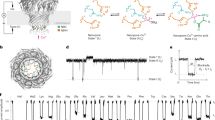Abstract
A total organophosphorus pesticide exposure study was conducted in Washington State in 1998 in a sample population of 13 children aged 2.5–5.5 years. The children were roughly split between rural and suburban populations and had been previously identified as having potentially elevated organophosphorus pesticide exposures. One component of the study was urine collection and analysis. Urine samples were collected from each subject up to four times in 24 h in two different seasons. Samples were collected at specific time points: before bed, first morning void, after lunch, and before dinner. Urine samples were analyzed initially for the six nonspecific dialkylphosphate (DAP) metabolites and subsequently for eight specific metabolites including malathion dicarboxylic acid (MDA), 3,5,6-trichloro-2-pyridinol (TCPy), and paranitrophenol (PNP). Relatively large percentages of the urine samples contained quantifiable amounts of two of the nonspecific DAP metabolites (DMTP—97%; DETP—67%), and three of the specific metabolites (MDA (71%), TCPy (79%), and PNP (96%)). A percent deviation analysis was employed to determine which of the spot sample time points was the best predictor of the estimated volume-weighted daily average. Of the four spot samples collected, first morning void samples were consistently found to be the best predictors of weighted-average daily metabolite concentration. This finding also held when the data were creatinine-adjusted. The results of this analysis suggest that if spot sampling is to be conducted as part of a biological monitoring study, first morning void samples should be preferentially collected.
This is a preview of subscription content, access via your institution
Access options
Subscribe to this journal
Receive 6 print issues and online access
$259.00 per year
only $43.17 per issue
Buy this article
- Purchase on Springer Link
- Instant access to full article PDF
Prices may be subject to local taxes which are calculated during checkout



Similar content being viewed by others

References
Adgate J.L., et al. Measurement of children's exposure to pesticides: and analysis of urinary metabolite levels in a probability-based sample. Environ Health Perspect 2001: 109(6): 583–590.
Aprea C., et al. Biologic monitoring of exposure to organophosphorus pesticides in 195 Italian children. Environ Health Perspect 2000: 108(6): 521–525.
Feldman R., and Maibach H. Percutaneous penetration of some pesticides and herbicides in man. Toxicol Appl Pharm 1974: 28: 123–132.
Fenske R.A., et al. Assessment of organophosphorus pesticide exposure in the diets of pre-school children in Washington State. J Expos Anal Environ Epidemiol 2002: 12: 21–28.
Griffin P., et al. Oral and dermal absorption of chlorpyrifos: a human volunteer study. Occup Environ Med 1999: 56: 10–13.
Hinwood A.L., et al. Are 24-hour urine samples and creatinine adjustment required for analysis of inorganic arsenic in urine in population studies? Environ Res 2002: 88(3): 219–224.
Hwang Y.H., et al. Urinary arsenic excretion as a biomarker of arsenic exposure in children. Arch Environ Health 1997: 52(2): 139–147.
Kedan G. Comparison of estimated aggregate exposure to organophosphorus pesticides with biomonitoring for urinary dialkylphosphate metabolites among children. MS Thesis) University of Washington: Seattle, WA, 1999.
Koch D., et al. Temporal association of children's pesticide exposure and agricultural spraying: report of a longitudinal biological monitoring study. Environ Health Perspect 2002: 110(8): 829–833.
Loewenherz C., et al. Biological monitoring of organophosphorus pesticide exposure among children of agricultural workers in central Washington State. Environ Health Perspect 1997: 105(12): 1344–1353.
Lu C., et al. Biological monitoring survey of organophosphorus pesticide exposure among preschool children in the Seattle metropolitan area. Environ Health Perspect 2001: 109(3): 299–303.
Moate T.F., et al. Improved cleanup and determination of dialkyl phosphates in the urine of children exposed to organophosphorus insecticides. J Anal Toxicol 1999: 23(4): 230–236.
Nolan R.J., et al. Chlorpyrifos pharmacokinetics in human volunteers. Toxicol Appl Pharm 1984: 73: 8–15.
Olsson A.O., et al. A liquid chromatography/electrospray ionization-tandem mass spectrometry method for quantification of specific determination of organophosphorus pesticide biomarkers in human urine. Anal Bioanal Chem 2003: 376: 808–815.
O'Rourke M.K., et al. Pesticide exposure and creatinine variation among young children. J Expos Anal Environ Epi 2000: 10: 672–681.
World Health Organization (WHO). Organophosphorus Insecticides: A General Introduction, Vol. 63. World Health Organization, New York, NY, 1986.
Acknowledgements
This work was supported primarily by the U.S. EPA Science to Achieve Results (STAR) program (R819186). Additional support came from the U.S. EPA/NIEHS Child Health Centers Program (R826886/PO1ES09601) and the NIOSH Agricultural Centers Program (U07/CCU012926). We thank Tom Moate for his analytical work and our subjects for their participation. These findings do not necessarily reflect the views of the funding agencies and no official endorsement should be inferred.
Author information
Authors and Affiliations
Corresponding author
Rights and permissions
About this article
Cite this article
Kissel, J., Curl, C., Kedan, G. et al. Comparison of organophosphorus pesticide metabolite levels in single and multiple daily urine samples collected from preschool children in Washington State. J Expo Sci Environ Epidemiol 15, 164–171 (2005). https://doi.org/10.1038/sj.jea.7500384
Received:
Accepted:
Published:
Issue Date:
DOI: https://doi.org/10.1038/sj.jea.7500384
Keywords
This article is cited by
-
Bayesian inference of chemical exposures from NHANES urine biomonitoring data
Journal of Exposure Science & Environmental Epidemiology (2022)
-
Fetal growth in environmental epidemiology: mechanisms, limitations, and a review of associations with biomarkers of non-persistent chemical exposures during pregnancy
Environmental Health (2019)
-
Variability and exposure classification of urinary levels of non-essential metals aluminum, antimony, barium, thallium, tungsten and uranium in healthy adult men
Journal of Exposure Science & Environmental Epidemiology (2019)
-
A Pilot Study Evaluating Organochlorine and Organophosphate Pesticide Exposure in Children and Adolescents of Mexican Descent Residing in Hidalgo County, Texas
Journal of Immigrant and Minority Health (2019)
-
Characterization of Pesticide Exposure in a Sample of Pregnant Women in Ecuador
Archives of Environmental Contamination and Toxicology (2016)


